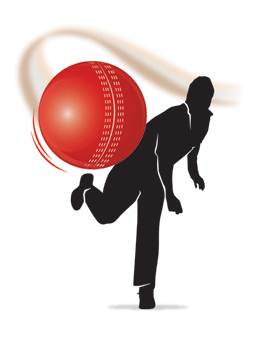Cricket Show 174: Captaincy Art, Captaincy Science
| Attachment | Size |
|---|---|
| PitchVision Academy - PitchVision Academy Cricket Show 174.mp3 | 24.93 MB |

Captaincy and tactics have become much more scientific and evidence-based at the top level. This week we discuss what this means for the club and school captain, coach (and the poor old scorer).
We also answer questions on how to adjust the training culture in your side and bowling to batsman's weaknesses.
Turns out you might not even need to. Listen to the show to find out more.
Lunge Your Way to Cricketing Success

Last week we discussed the power of the lunge pattern in improving cricket performance. This week we look at the technique for good lunging.
The forward lunge simulates movements that we make in cricket when we bat, bowl, field and keep wicket as well as being the starting point for the development of speed and stability: two vital components within any athletic performance.
Gary Palmer's Video Analysis
Gary Palmer has a new online coaching course up on PitchVision Academy where he reveals all the secrets of his latest system - 4 Angles.
In this 2nd free preview video, Gary looks a t ayoung batsman's technique to find out how 4 Anglescan help him.
Click here to view the video now.
It's OK to Ask to Bowl More

Menno Gazendam is author of the popular Spin Bowling Project.
Here's a question I got from a reader;
"I don’t get much bowling opportunity in the game. And when I do, one mistake and I am off".
This is a very common complaint.
Free Video Reveals: Gary Palmer's Batting Secrets
Gary Palmer has a new online coaching course up on PitchVision Academy where he reveals all the secrets of his latest system - 4 Angles.
In this free preview video, Gary talks you through the 4 Angles system and why it trumps the methods that are currently being used by coaches.
Cricket Show 173: The Problems of Harbhajan
| Attachment | Size |
|---|---|
| PitchVision Academy - PitchVision Academy Cricket Show 173.mp3 | 25.61 MB |

On the table for discussion this week is the problems of spinners 'losing it', deciding what to do at the toss based on pitch conditions and what training to do during the rainy season.
The Single Best Exercise for Cricket

I was asked an interesting question the other day;
“What is the one best physical exercise for cricket?”
Now, fitness is more than one exercise.
A programme would incorporate numerous drills, exercises, aerobic training, anaerobic training, strength, power, core, weights and many other elements to boot.
Fitness Toolkit: How to Coach Strength into Cricketers
They may not look like big chested hulks (although some like Kallis, Flintoff and Irfan Pathan come close) but to bowl quick, put revs on the ball or hit the ball hard you need to have strength.
The pros have strength coaches to plan their every gym visit. Grass-roots coaches and their players may not even have access to a gym.
But that doesn't mean you need to ignore the usefulness of strength training in your sessions.
Why Spin Bowlers Need Brave Captains

Menno Gazendam is author of the popular Spin Bowling Project online coaching course. This week he discusses how to captain spinners.
The best players have always been the brave players.
Just think of Marshall batting with a broken hand, Graeme Smith a broken finger, Murali with a problem hamstring bowling his heart out at the World Cup, Kumble with bandages around his head still fizzing down top spinners: all great players, all brave.
But, there is a different type of bravery in cricket, one that is often overlooked. One that you will rarely hear mentioned in any commentary.
Fitness Toolkit: How to Stop Injuries Before They Happen
In the old days if you got an injury you just shrugged, put it down to bad luck and waited for it to heal up.
Some people still do that.
But the clever guys (that's you, because you are reading this) know some things can be headed off at the pass.
You can stop an injury before it happens.
We know this because researchers have looked into the influence of posture on rate of injury. They found that certain postural triggers - the way you hold yourself when moving and still - lead to more injuries.


